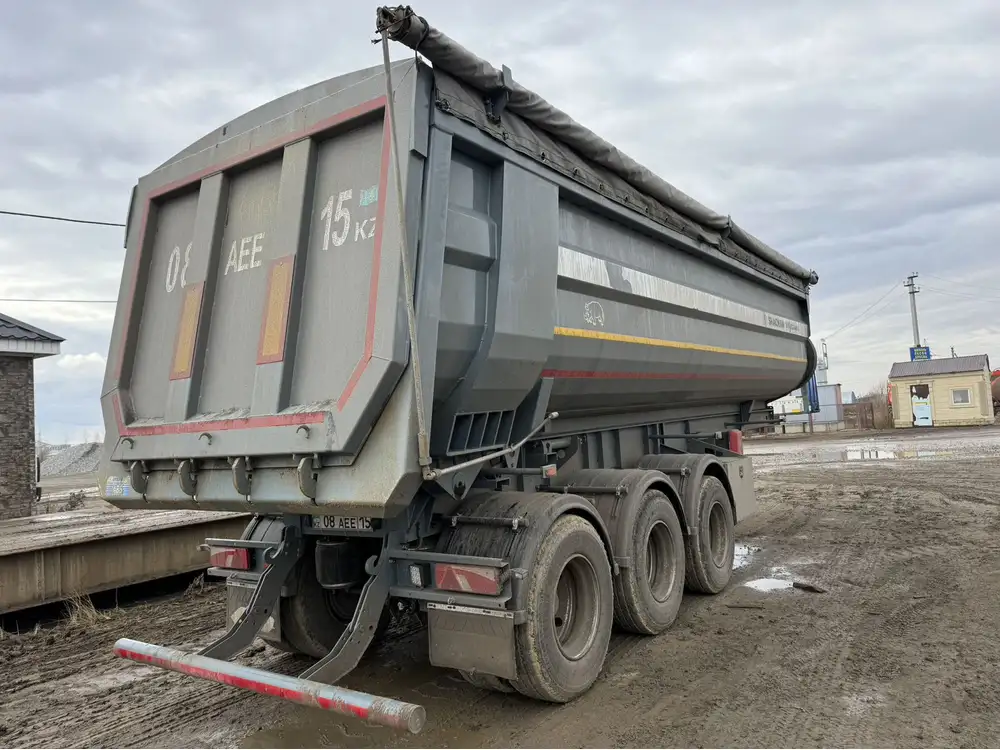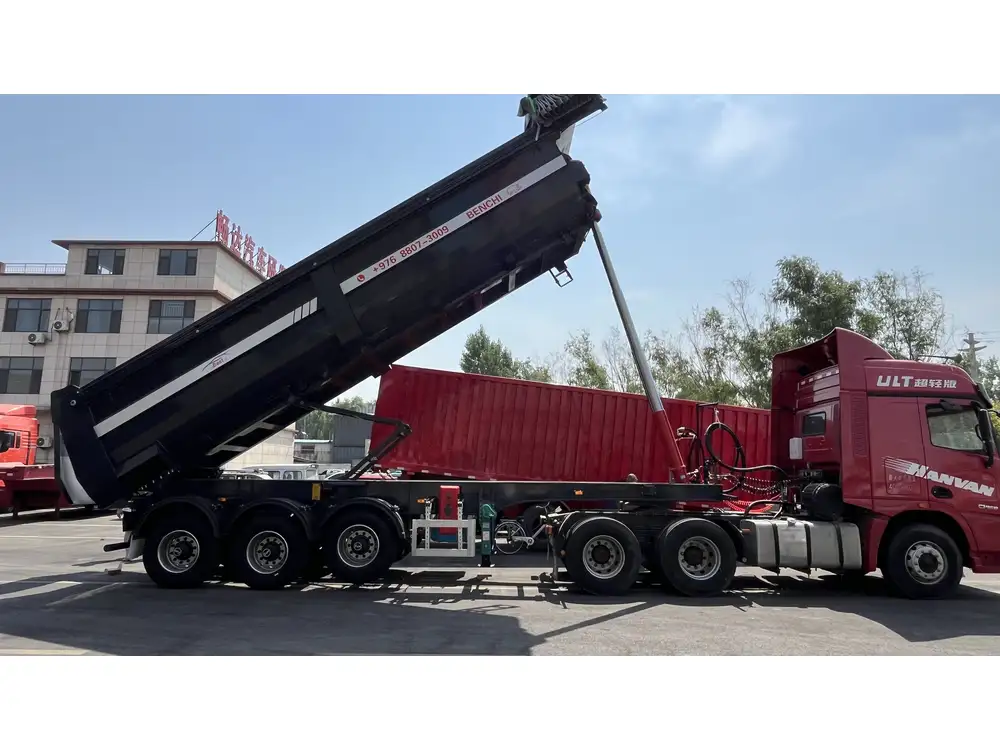Understanding Semi-Tank Trailers: An Overview
Semi-tank trailers are critical components of the transportation and logistics industry, primarily designed to haul various liquids, including fuels, chemicals, food-grade commodities, and more. These trailers come in different formats and designs, affecting their capacity and applications. Knowing the storage capacity of these trailers is essential for businesses looking to optimize their logistics and reduce transport costs.
Types of Semi-Tank Trailers
To understand how many gallons a semi-tank trailer can hold, we must first explore the different types that exist within the market:
| Type of Semi-Tank Trailer | Description | Typical Capacity |
|---|---|---|
| Fuel Tanker Trailer | Used for transporting diesel, gasoline, or other fuels. | 6,000 – 11,600 gallons |
| Chemical Tanker | Designed to carry dangerous chemicals with specific material requirements. | 5,000 – 8,000 gallons |
| Food Grade Tanker | FDA-approved tanks for transporting food and beverage products. | 5,000 – 7,000 gallons |
| Livestock Tanker | A specialized trailer to transport livestock, often fitted with ventilation. | Variable, based on livability |
| Vacuum Tanker | Utilized for hauling sludge or waste materials, often featuring suction. | 1,000 – 3,000 gallons |

Key Factors Influencing Capacity
The capacity of a semi-tank trailer is not a one-size-fits-all figure. It depends primarily on various factors, such as:
- Design Specification: The dimensions and shape of the tank influence overall capacity; round designs typically hold more liquid than rectangular tanks.
- Material Used: The thickness and type of metals or composites can limit or enhance weight capacity, thereby impacting how much liquid can be carried without exceeding weight limits set by DOT regulations.
- Regulatory Constraints: Different states have regulations that limit the maximum weight a truck can legally carry, impacting how much can be safely loaded.
How Many Gallons Does a Semi Tank Trailer Hold?
Let’s delve deeper into the specific capacities of common types of semi-tank trailers, examining factors and how they influence the number of gallons a semi-tank trailer can hold.
Fuel Tanker Trailers
One of the most important types of semi-tank trailers, fuel tankers, are designed to transport various petroleum products. Below is a detailed breakdown:
- Capacity Range: Typically between 6,000 and 11,600 gallons.
- Common Specifications:
- Tri-Axle Configuration: A standard for fuel tankers, allowing for greater weight distribution and increased stability.
- Liquid Bulk Transport: Fuel tankers often feature multiple compartments for transporting different grades of fuel simultaneously.

Chemical Tankers
These trailers must comply with stringent safety regulations due to the potentially hazardous nature of their cargo. Here’s what to know:
- Capacity Range: Usually ranges from 5,000 to 8,000 gallons.
- Material Design:
- Corrosion-resistant coatings: Chemicals may react with standard steels, necessitating specialized materials.
- Piping and Valves: Must be designed for specific chemical interactions, impacting the cargo-loading algorithm and total capacity.
Food Grade Tankers
Transporting food products demands adherence to health regulations, impacting design and capacity:
- Capacity Range: Approximately 5,000 to 7,000 gallons.
- Regulations: Must be made from stainless steel, ensuring no contamination occurs.
- Clean-out Procedures: Required after every use to maintain food safety standards.
Vacuum Tankers
Vacuum tankers are optimized for transporting liquids such as sewage and industrial waste. Key factors include:
- Capacity Range: Generally holds around 1,000 to 3,000 gallons.
- Design Elements:
- Equipped with vacuum suction systems that allow for easier unloading.
- May have varying types of containment systems.

Practical Considerations for Fleet Managers
Understanding the capacity of semi-tank trailers is paramount; fleet managers should consider several practical aspects:
- Load Optimization: Efficiently using trailer capacity ensures better profit margins. A 10,000-gallon fuel tanker can reduce transportation frequency and operative costs.
- Route Planning: Knowing the capacities can aid in more effective logistical planning, including the number of loads needed for a given delivery.
- Compliance with Regulations: Always be informed about the legal restrictions in your operating regions, which affect both weight and cargo types.
Comparing Trailer Capacities
For a clearer understanding, let’s summarize the capacities in a comparative manner:
| Trailer Type | Capacity (Gallons) | Typical Usage |
|---|---|---|
| Fuel Tanker | 6,000 – 11,600 | Fuel distribution |
| Chemical Tanker | 5,000 – 8,000 | Transportation of chemicals |
| Food Grade Tanker | 5,000 – 7,000 | Transporting food products |
| Livestock Tanker | Variable | Hauling livestock |
| Vacuum Tanker | 1,000 – 3,000 | Waste and sludge management |
Additional Considerations When Choosing a Semi-Tank Trailer

Weight Distribution
Understanding the weight distribution of the trailer is essential for safety and efficiency. A properly balanced trailer ensures that all axles function effectively, reducing wear and tear.
Tire Pressure
Maintaining optimal tire pressure can prevent blowouts and promote even wear, which is critical, especially when transporting heavy liquid loads. Too much weight on tires not rated for heavy loads can lead to failures.
Maintenance Costs
Regular maintenance of semi-tank trailers is crucial—especially for those carrying hazardous materials. Understanding the costs associated with this upkeep is important for budget planning and fleet longevity.

Conclusion
In conclusion, the question of “how many gallons does a semi-tank trailer hold?” is pivotal for logistics, transporters, and fleet managers alike. By understanding the various types and their specific capacities, businesses can make informed decisions that maximize efficiency and compliance with regulations. Additionally, analyzing weight distribution, material constraints, and practical considerations streamlines operations and enhances safety.
By optimizing transport capabilities, we position our businesses to thrive in a competitive market—where every gallon transported counts toward our ultimate success.
Understanding these factors enables us to tailor our operations for the best possible outcomes, ensuring that we not only keep up with industry standards but also pave the way for innovation in transport logistics.



